Content Warnings: Terminal illness, death of a child, grief and loss depiction
In Loneliness, We Find Friendship
Terminal illness in oneself and those we love can bring out the worst in people and the best in others. Death can be a catalyst for some, a reminder that beauty can be found in small moments, activities, and love, even through illness and pain.
In Klara and the Sun by Kazuo Ishiguro (his 8th novel), Klara, an AF (Artificial Friend), explores the beauty of humanity through the store window as she observes the actions, reactions, and emotions of passersby, and then by spending time with Josie, her “child,” who has a terminal illness. As she learns more about Josie, she goes on a quest to cure her by appeasing the Sun, a God-like entity to Klara due to her solar-powered body.
What Does it Mean to Be Human?
Below, we explore whether this novel could be considered “cheerful” (the intent of Ishiguro while crafting the novel) or a morose tale that talks of AI that is ultimately forgotten.
Ishiguro’s novel begins with Klara, Rose (a fellow AF), and the Manager of the AF store. Each of the AFs is awaiting their forever homes, doing their best to look appealing to children and adults browsing the store. As time passes, it’s clear Klara is different from the other AFs, as she contemplates passersby’s emotions (bad, good, and everything in between) while in the coveted window spot with Rose. In contrast, Rose observes more simple actions, such as the number of AFs on the street, and overlooks more emotionally driven events. This clear distinction between the two AFs makes Klara’s “humanity” more apparent.
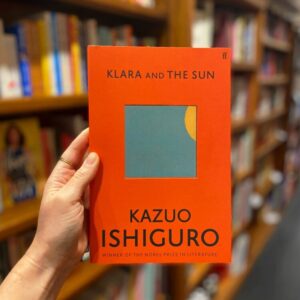 Klara’s keen eye for observation, along with a “humanness” (demonstrated by more advanced questions and the choice to try to feel the emotions of humans), helps her stand out to Josie and her mother (known as “the Mother”), who eventually bring her home. Once at Josie’s house, Klara does her best to learn more about Josie and what she can do to be the best AF possible. Here, we learn that Josie has been “lifted,” a procedure that is meant to create more intelligent, better-prepared children. Unfortunately, this same process meant to prepare children for the future is also the cause of Josie’s chronic illness.
Klara’s keen eye for observation, along with a “humanness” (demonstrated by more advanced questions and the choice to try to feel the emotions of humans), helps her stand out to Josie and her mother (known as “the Mother”), who eventually bring her home. Once at Josie’s house, Klara does her best to learn more about Josie and what she can do to be the best AF possible. Here, we learn that Josie has been “lifted,” a procedure that is meant to create more intelligent, better-prepared children. Unfortunately, this same process meant to prepare children for the future is also the cause of Josie’s chronic illness.
Rick, Josie’s neighbor and best friend, is unlifted, which causes others to view him as lesser than others. This is revisited at the novel’s end, as Rick cannot attend college because of it. As Klara continues developing her relationship with Josie, the Mother, and the Father, it becomes clear that she is meant to replace Josie should she pass away. She’s encouraged to learn Josie’s mannerisms and even to imitate her occasionally.
This realization causes Klara to devise a plan to heal Josie through the Sun after witnessing “Beggar Man” and his dog “revived by the Sun” from the window of the AF shop. She hatches a plan to destroy a Cootings Machine, which she believes is causing pollution and thus harming the Sun. However, after she destroys the machine with the help of the Father, a newer, bigger one is immediately put in its place. She prays to the Sun anyway, hoping for Josie’s healing.
One sunny day, Josie begins to get better miraculously (because of the Sun, according to Klara). Once she is healthy again, Josie begins spending time with other lifted people her age, leaving Klara and Rick behind. The novel concludes with Klara in the Yard, a location where AFs are left to “slow fade.” She becomes immobile and eventually sees the Manager again, who she tells about the Sun’s miraculous healing of Josie.
Learning About Humanity Through An Outside Perspective
Though Klara seems to have been discarded once Josie was done with her, she does not hold a grudge or face negative thoughts about her experiences. Instead, she chooses isolation from other AFs, allowing Klara to replay and organize her memories. She reminisces on the power of the Sun and how it helped Josie recover from her illness.
While this ending may seem sad from the outside, it exudes a bittersweet cheerfulness and fondness of a close friendship many years ago. Instead of looking back in anger, Klara can look back with an understanding that she fulfilled her part in Josie’s life.
So, it can be argued that Ishiguru meant to create a cheerful novel, and he succeeded, but not in the way most readers would expect. His exploration of terminal illness and the ability to find happiness in small moments shows a cheerfulness regarding illness. Instead of spending time in the book mourning Josie, he uses Klara to delve into the bright moments in Josie’s life, thus creating a more “cheerful” perspective of illness, a view in which people are more than their illnesses as they’re capable of experiencing other emotions beyond sadness.
Read Klara and the Sun
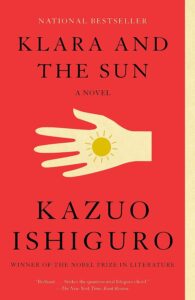 Klara and the Sun by Kazuo Ishiguro
Klara and the Sun by Kazuo Ishiguro
Vintage Books: March 1, 2022, 320 pages
$10.88 USD – Paperback
ISBN-13: 978-0593311295
$13.99 USD – Kindle
ASIN: B08B7V6CQ8
NEW YORK TIMES BESTSELLER • Once in a great while, a book comes along that changes our view of the world. This magnificent novel from the Nobel laureate and author of Never Let Me Go is “an intriguing take on how artificial intelligence might play a role in our futures … a poignant meditation on love and loneliness” (The Associated Press). • A GOOD MORNING AMERICA Book Club Pick!
Here is the story of Klara, an Artificial Friend with outstanding observational qualities, who, from her place in the store, watches carefully the behavior of those who come in to browse, and of those who pass on the street outside. She remains hopeful that a customer will soon choose her. Klara and the Sun is a thrilling book that offers a look at our changing world through the eyes of an unforgettable narrator, and one that explores the fundamental question: what does it mean to love?
Read the Paperback Read the eBook
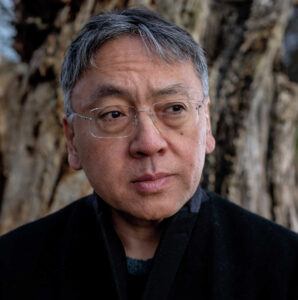 SIR KAZUO ISHIGURO (カズオ・イシグロ or 石黒 一雄), OBE, FRSA, FRSL is a British novelist of Japanese origin and Nobel Laureate in Literature (2017). His family moved to England in 1960. Ishiguro obtained his Bachelor’s degree from the University of Kent in 1978 and his Master’s from the University of East Anglia’s creative writing course in 1980. He became a British citizen in 1982. He now lives in London.
SIR KAZUO ISHIGURO (カズオ・イシグロ or 石黒 一雄), OBE, FRSA, FRSL is a British novelist of Japanese origin and Nobel Laureate in Literature (2017). His family moved to England in 1960. Ishiguro obtained his Bachelor’s degree from the University of Kent in 1978 and his Master’s from the University of East Anglia’s creative writing course in 1980. He became a British citizen in 1982. He now lives in London.
His first novel, A Pale View of Hills, won the 1982 Winifred Holtby Memorial Prize. His second novel, An Artist of the Floating World, won the 1986 Whitbread Prize. Ishiguro received the 1989 Man Booker Prize for his third novel The Remains of the Day. His fourth novel, The Unconsoled, won the 1995 Cheltenham Prize. His latest novel is The Buried Giant, a New York Times bestseller. He was awarded the Nobel Prize in Literature in 2017.
His novels An Artist of the Floating World (1986), When We Were Orphans (2000), and Never Let Me Go (2005) were all shortlisted for the Man Booker Prize.
In 2008, The Times ranked Ishiguro 32nd on their list of “The 50 Greatest British Writers Since 1945”. In 2017, the Swedish Academy awarded him the Nobel Prize in Literature, describing him in its citation as a writer “who, in novels of great emotional force, has uncovered the abyss beneath our illusory sense of connection with the world.”
Don’t Forget to Read Klara and the Sun
Read the Paperback Read the eBook
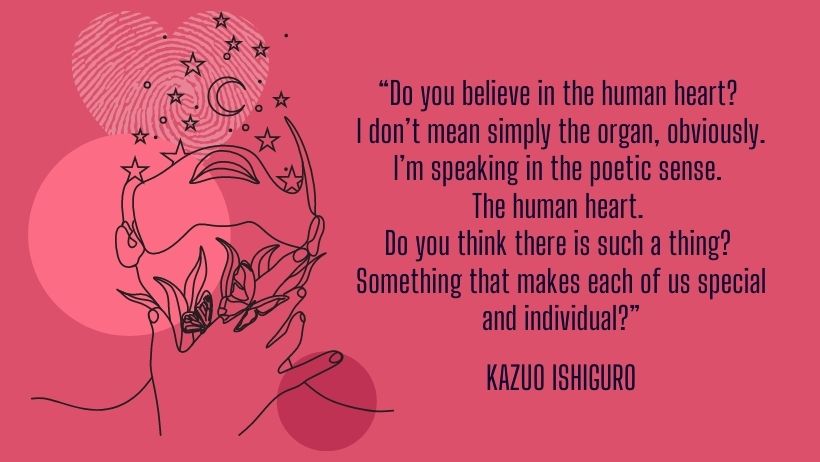


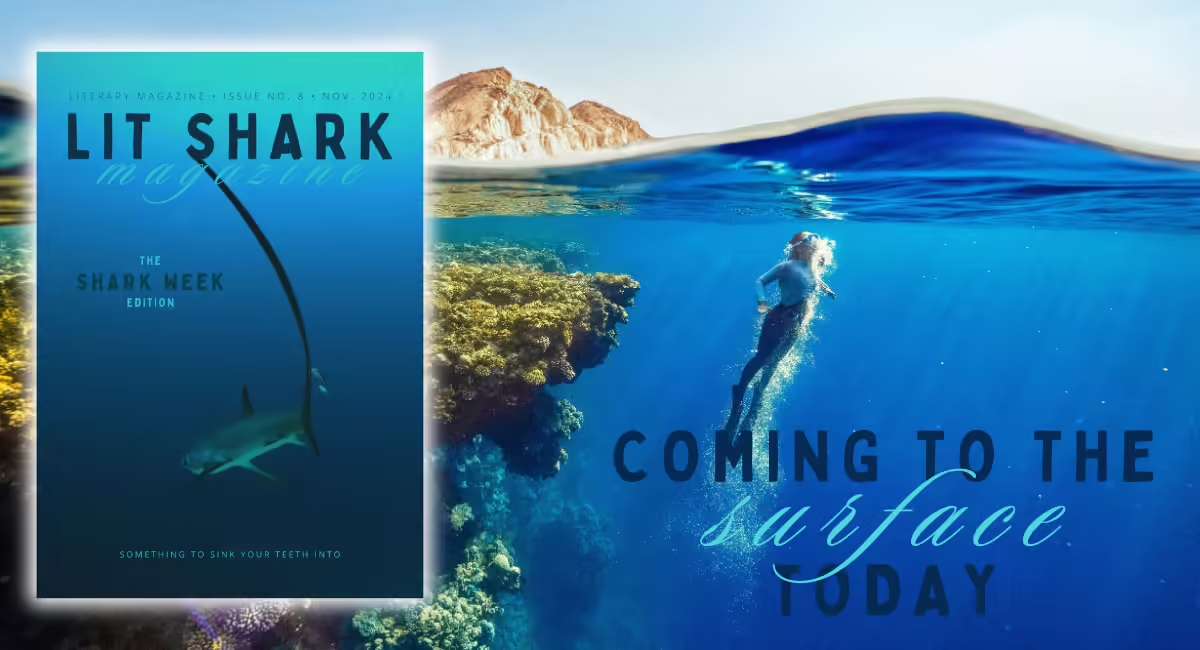



0 Comments
Trackbacks/Pingbacks